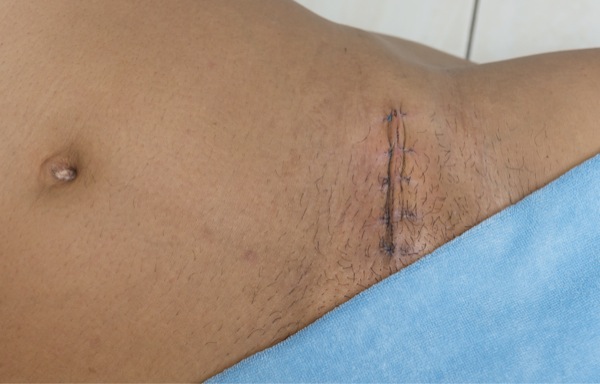Hernias are a common medical condition that occurs when an organ or fatty tissue protrudes through a weak spot in the surrounding muscle or tissue. Inguinal hernias are the most common type of hernia and occur in the groin area. Surgical intervention is often required to repair inguinal hernias. There are two main types of surgery for inguinal hernias: open surgery and laparoscopic surgery. In this blog, we will compare the two procedures and discuss their benefits and drawbacks.
Open Inguinal Hernia Surgery

Open inguinal hernia surgery is the traditional method of hernia repair. During the surgery, the surgeon makes a single incision in the groin area, and the hernia sac is pushed back into the abdominal cavity. Then, the weakened area of the muscle or tissue is repaired, and a mesh patch is often used to provide additional support to the area. The incision is then closed with sutures.
Benefits of Open Inguinal Hernia Surgery
One of the primary benefits of open inguinal hernia surgery is that it is a tried and tested method of hernia repair. Surgeons have been performing this type of surgery for many years, and it has a high success rate. Another benefit is that the procedure can be performed under local anesthesia, which is a safer option for patients who cannot tolerate general anesthesia.
Drawbacks of Open Inguinal Hernia Surgery
One of the main drawbacks of open inguinal hernia surgery is the size of the incision. The larger incision can lead to more pain, longer recovery time, and a higher risk of infection. In addition, the larger incision can result in more scarring.
Laparoscopic Inguinal Hernia Surgery

Laparoscopic inguinal hernia surgery is a newer method of hernia repair. During this procedure, the surgeon makes several small incisions in the abdominal area, and a laparoscope is inserted through one of the incisions. The laparoscope provides a video feed of the area, allowing the surgeon to view the hernia and surrounding tissues on a monitor. Then, using specialized instruments, the surgeon repairs the weakened area of the muscle or tissue and places a mesh patch for added support.
Benefits of Laparoscopic Inguinal Hernia Surgery
One of the main benefits of laparoscopic inguinal hernia surgery is that it is a minimally invasive procedure. The smaller incisions lead to less pain, a shorter recovery time, and a lower risk of infection. In addition, there is less scarring with laparoscopic surgery, which is important for patients who are concerned about the appearance of their scars.
Drawbacks of Laparoscopic Inguinal Hernia Surgery
One of the main drawbacks of laparoscopic inguinal hernia surgery is that it is a more complex procedure than open surgery. The procedure requires specialized equipment, and the surgeon must be highly skilled in laparoscopic techniques. In addition, the procedure can take longer to perform than open surgery.
Conclusion
In conclusion, both open and laparoscopic inguinal hernia surgeries have their benefits and drawbacks. Open surgery is a more traditional approach with a high success rate, but it requires a larger incision and can lead to more pain and scarring. Laparoscopic surgery is a newer, minimally invasive approach with less pain and scarring, but it is a more complex procedure that requires specialized equipment and a highly skilled surgeon. Ultimately, the choice of procedure will depend on the patient’s individual circumstances and the surgeon’s recommendation.

